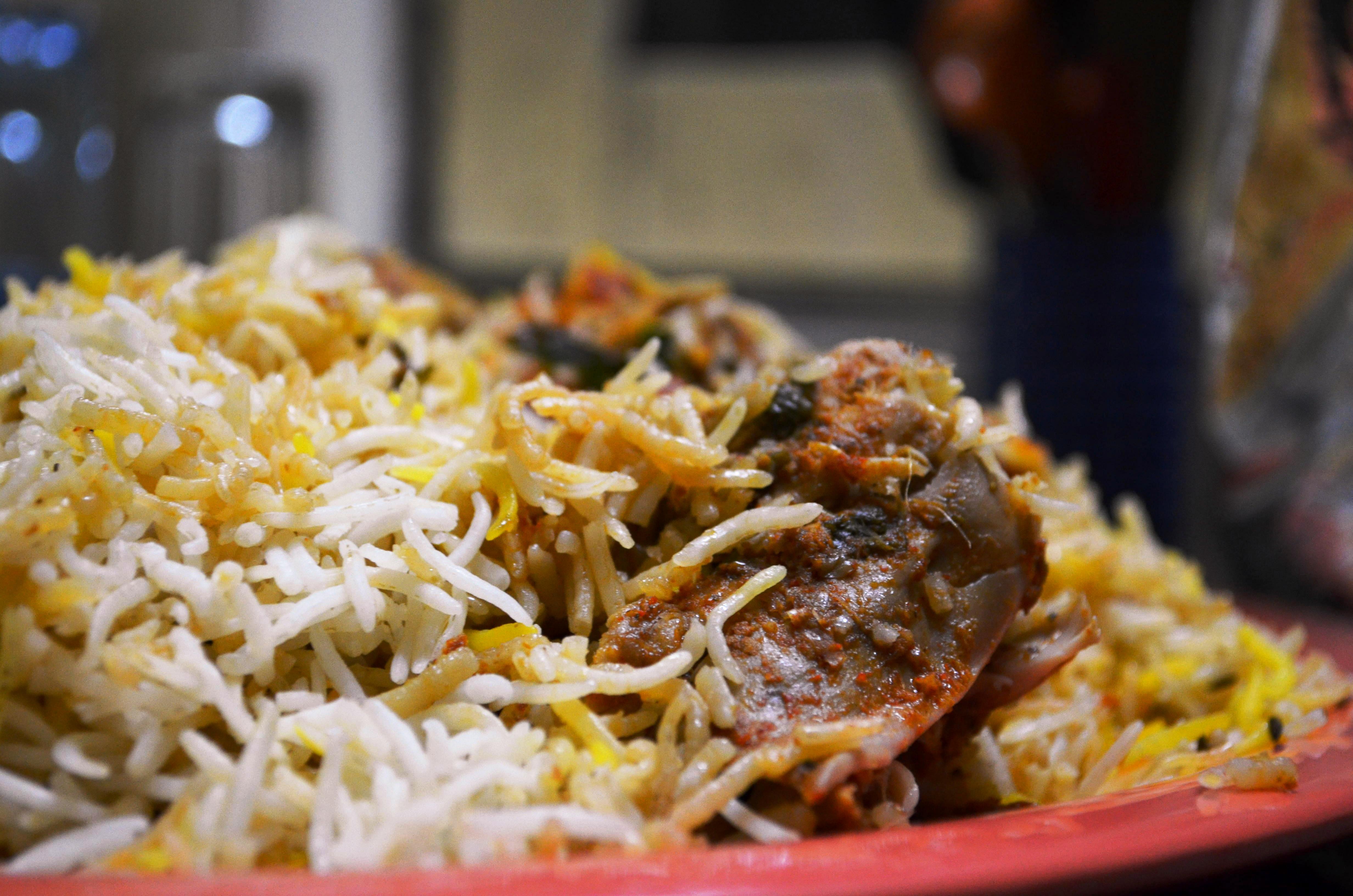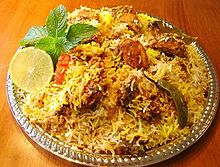
Introduction
What Is Biryani?
Biryani is a popular and flavorful rice dish that is enjoyed in many parts of the world, particularly in India and the Middle East. It is made by cooking rice with meat or vegetables, along with a blend of aromatic spices. Biryani is known for its rich flavors and unique cooking method, which involves layering the rice and the meat or vegetables and then cooking them together to infuse the flavors.
Importance Of Tracing The Inventor Of Biryani
The origin of biryani has been a subject of debate and speculation for many years. While there are various theories and legends surrounding its invention, tracing the true origin and inventor of biryani is of significant importance. Understanding the history and cultural influences behind this beloved dish can provide valuable insights into the culinary traditions and migration patterns of different regions.
By exploring the origins of biryani, we can gain a deeper appreciation for the diverse influences that have shaped this dish over the centuries. It allows us to understand the cultural exchange and diffusion of culinary practices between different countries and regions. Additionally, tracing the inventor of biryani can help preserve the authenticity and heritage of this dish, ensuring that it is prepared and enjoyed in its original form.
While it may be challenging to pinpoint the exact inventor of biryani, studying the various theories and historical accounts can shed light on how this dish evolved and spread across different regions. The Persian influence on biryani is widely acknowledged, but other factors, such as the Mongol invasions and Mughal emperors of India, have also played a significant role in its development.
In the following sections, we will explore some of the theories and legends surrounding the origins of biryani, as well as the cultural influences that have shaped this iconic rice dish. Let’s delve into the intriguing history of biryani and discover the hidden stories behind its creation.
The Mughal Influence
Legend Of Biryani’s Journey To The Indian Subcontinent
Legend has it that biryani made its way to the Indian subcontinent through the Mughal emperors. These rulers, known for their refined taste in cuisine, brought with them the Persian dish called “pilaf.” Over time, this pilaf was transformed into the masterpiece that is biryani, by incorporating aromatic Indian spices and using local ingredients. The Mughals elevated cooking to an art form and introduced several recipes to India, including biryani, pilaf, and kebabs. The impact of their culinary contributions can still be felt today.
Transformation Of Pilaf Into Biryani By The Mughal Emperors
The Mughal emperors played a significant role in shaping the modern-day biryani that we know and love. They combined the Persian influence of pilaf with the rich Indian spices and ingredients, creating a unique and delectable dish. The Mughals introduced different variations of biryani across India, each reflecting the culinary traditions and flavors of the respective regions.
Biryani is a testament to the enduring popularity and delicious taste that has captivated people’s hearts and taste buds worldwide. It remains a beloved dish in India and beyond. In fact, biryani has developed regional variations in different states of India, each with its own distinct flavors and cooking styles.
By understanding the cultural influences and tracing the origins of biryani, we gain a deeper appreciation for the diversity and richness of this iconic rice dish. It represents the fusion of Persian and Indian culinary traditions, as well as the impact of Mughal emperors on the culinary landscape of the Indian subcontinent. The Mughals truly left their imprint on history through their love for fine cuisine, and biryani is one of their most enduring legacies.
So, whether you’re enjoying a plate of aromatic Hyderabadi biryani or savoring the flavors of Kolkata biryani, you’re experiencing a dish that has traveled through time and cultures, leaving its mark on each region it has touched. The journey of biryani is a testament to the power of food to transcend boundaries and unite people in their love for a truly delicious meal.
Persian Inspiration
Influence Of Islamic Persians On Biryani
The origins of biryani can be traced back to Islamic Persians who inspired and popularized the dish. The famous traveler and historian Al-Biruni has provided precise descriptions of meals at the courts of Indian Sultans prior to the Mughals, which included rice dishes similar to the Mughal biryani. The Islamic Persians introduced their culinary traditions and flavors to the Indian subcontinent, leaving a lasting impact on the local cuisine.
Introduction Of Persian Word Birian In The Name
The word “biryani” itself is derived from the Persian word “birian,” which means fried before cooking. This refers to the technique of cooking rice and meat separately before layering them together to create the final dish. The use of the Persian word in the name of the dish further showcases the Persian influence on biryani’s creation and popularity in the region.
The Mughal emperors further refined and transformed the Persian dish into the masterpiece that is biryani. Their refined taste in cuisine led them to incorporate aromatic Indian spices and local ingredients, elevating biryani to an art form. The Mughals introduced various regional variations of biryani across India, reflecting the culinary traditions and flavors of different states.
Today, biryani remains a beloved dish in India and beyond. It has developed distinct regional variations, each with its own unique flavors and cooking styles. The journey of biryani is a testament to the fusion of Persian and Indian culinary traditions and the lasting impact of the Mughal emperors on the culinary landscape of the Indian subcontinent.
Whether you’re enjoying a plate of aromatic Hyderabadi biryani or savoring the flavors of Kolkata biryani, you’re experiencing a dish that has traveled through time and cultures, leaving its mark on each region it has touched. Biryani truly represents the power of food to transcend boundaries and unite people in their love for a truly delicious meal.

The Iranian Connection
Tracing The Origins Of Biryani To Iran (persia)
The origins of biryani can be traced back to Iran, previously known as Persia. Islamic Persians inspired and popularized the dish, introducing their culinary traditions and flavors to the Indian subcontinent. The word “biryani” itself is derived from the Persian word “birian,” meaning fried before cooking. This technique involves cooking rice and meat separately before layering them together to create the final dish.
Historical Evidence Supporting The Iranian Origin Theory
The influence of Islamic Persians on Indian cuisine is well-documented. Noted traveler and historian Al-Biruni provides detailed descriptions of meals at the courts of Indian Sultans before the Mughal era, which included rice dishes similar to the Mughal biryani. This points to the Persian influence on biryani’s creation and popularity in the region.
The Mughal emperors further refined and transformed the Persian dish into the masterpiece that is biryani. They incorporated aromatic Indian spices and local ingredients, elevating biryani to an art form. The Mughals introduced various regional variations of biryani across India, reflecting the culinary traditions and flavors of different states.
Today, biryani remains a beloved dish not only in India but also beyond its borders. It has developed distinct regional variations, each with its own unique flavors and cooking styles. From the aromatic Hyderabadi biryani to the flavorsome Kolkata biryani, every region has added its own twist to this culinary delight.
The journey of biryani is a testament to the fusion of Persian and Indian culinary traditions and the lasting impact of the Mughal emperors on the culinary landscape of the Indian subcontinent. Through time and cultures, biryani has left its mark, transcending boundaries and uniting people in their love for a truly delicious meal.
Mumtaz Mahal’s Influence
The Story Of Mumtaz Mahal’s Encounter With Undernourished Army Personnel
During the Mughal era, Mumtaz Mahal, the beloved wife of Emperor Shah Jahan, had a deep concern for the well-being of the army personnel. She was known for her compassionate nature and her efforts to ensure that the soldiers were properly nourished to maintain their physical strength. It is said that during one of her visits to the army camp, Mumtaz Mahal noticed that the soldiers were undernourished and lacked the energy required to defend the kingdom.
Mumtaz Mahal Inspiring The Creation Of Biryani
Touched by the plight of the soldiers, Mumtaz Mahal requested the royal chefs to come up with a wholesome and nutritious dish that could provide the soldiers with the necessary sustenance. The chefs, taking inspiration from the Persian traditions and the culinary expertise of the Mughals, created biryani. They combined the techniques of cooking rice and meat separately, incorporating fragrant spices and aromatic flavors to create a dish that was not only delicious but also rich in nutrients.
Mumtaz Mahal’s love for the soldiers and her desire to provide them with a nourishing meal led to the birth of biryani. The dish was not only appreciated by the army personnel but also became a favorite among the royal family and the nobles. Its popularity grew, and biryani eventually became a symbol of culinary excellence and royalty.
Today, when we enjoy a plate of biryani, we can’t help but acknowledge the influence of Mumtaz Mahal. Her compassion and concern for the well-being of others inspired the creation of one of the most beloved dishes in the Indian subcontinent.
Regional Variations
Different Styles Of Biryani Across India And Pakistan
Biryani, a popular rice and meat dish, has evolved over the centuries, resulting in various regional variations in India and Pakistan. Each region has its own unique style of biryani, distinguished by the cooking technique, ingredients, and spices used. Some of the well-known regional biryanis include:
- Hyderabadi Biryani: Known for its rich flavors and distinct taste, the Hyderabadi biryani is a blend of Mughlai and Andhra cuisines. It is cooked with basmati rice, marinated meat, and a perfect balance of aromatic spices.
- Kolkata Biryani: Originating from the city of Kolkata in West Bengal, this biryani has a lighter and less spicy taste. It is prepared with fragrant rice, tender meat, and infused with flavors of saffron.
- Lucknowi Biryani: The Lucknowi or Awadhi biryani is known for its delicate flavors and the use of aromatic spices. It is cooked in the Dum style, where the rice and meat are slow-cooked together in a sealed pot.
- Hyderabadi Kacchi Biryani: A specialty of Hyderabad, this biryani is prepared using marinated raw meat, layered with partially cooked rice, and cooked on Dum until the flavors meld together.
- Karachi Biryani: Popular in Pakistan, Karachi biryani is known for its spicy flavor and use of fried onions. It is usually made with long-grain basmati rice, tender meat, and a mix of spices.
Influence Of Local Ingredients And Spices On Regional Variations
The regional variations of biryani are also influenced by the availability of local ingredients and spices in each region. Different regions in India and Pakistan have their own unique blend of spices and flavors, which contribute to the distinct taste of the biryanis. For example:
| Region | Key Ingredients | Signature Spice Blend |
|---|---|---|
| Hyderabad | Basmati rice, meat (chicken, mutton, or fish), yogurt, saffron, mint leaves, onions | Biryani masala, cinnamon, cloves, cardamom |
| Kolkata | Long-grain rice, meat (chicken or mutton), potatoes, raisins, cashews | Garam masala, saffron, nutmeg |
| Lucknow | Basmati rice, meat (mutton or chicken), saffron, yogurt, mint leaves | Ghee, fennel seeds, cloves, cinnamon |
| Karachi | Basmati rice, meat (beef or chicken), tomatoes, fried onions, green chilies | Garam masala, ginger garlic paste, red chili powder |
The use of region-specific spices and ingredients adds depth and complexity to the flavors of biryani, making each variation a unique culinary experience.
Popularizing Biryani
Growing Popularity Of Biryani In India And Beyond
Biryani has gained immense popularity not only in India and Pakistan but also globally. The distinct flavors, aromatic spices, and indulgent combination of rice and meat have made it a favorite dish among food enthusiasts. The increasing accessibility of biryani through restaurants, food delivery services, and home cooking has further contributed to its growing popularity. Biryani has become a go-to dish for celebrations, gatherings, and even everyday meals.
Biryani As A Beloved And Iconic Dish In South Asia
Biryani has become an iconic dish in South Asia, representing the rich culinary heritage of the region. It is often associated with celebrations, weddings, and special occasions. The diverse regional variations of biryani reflect the cultural diversity and culinary traditions of different communities. From the flavorsome Hyderabadi biryani to the fragrant Kolkata biryani, each variation has its own loyal fan base.
The love for biryani goes beyond borders, with people from different backgrounds appreciating and enjoying this delectable dish. It has become a symbol of unity and a representation of the shared culinary heritage of South Asia. The versatility of biryani, with options for vegetarian and non-vegetarian versions, further contributes to its widespread appeal.
In conclusion, biryani has evolved over the centuries through various influences and regional variations. The popularity of biryani continues to grow, both in India and internationally, making it an integral part of South Asian cuisine. Whether it is the rich flavors of the Hyderabadi biryani or the subtle aromas of the Lucknowi biryani, this beloved dish has captured the hearts and taste buds of people around the world. So, next time you have the opportunity, don’t miss out on savoring a plateful of flavorful biryani!

Unanswered Questions
Lack Of Concrete Evidence About The Exact Inventor Of Biryani
While there are multiple theories about how biryani made its way to India, the exact origins and the inventor of biryani remain unclear. Despite various claims and legends, there is a lack of concrete evidence to pinpoint a specific individual or region responsible for the invention of biryani. The popular legend that Turk-Mongol conqueror Timur brought a precursor to biryani when he arrived in India in 1398 is one of the theories, but it is not verifiable. The absence of documented recipes or historical records further complicates the identification of the true inventor.
Unresolved Debates And Theories Surrounding The Origins Of Biryani
The origins of biryani continue to be the subject of unresolved debates among food historians and enthusiasts. While it is generally accepted that biryani originated in West Asia, there are different theories about its journey to India. Some believe that it was brought by Muslim invaders, such as Turks, Arabs, Persians, and Afghans, who introduced their cuisine to the Indian subcontinent. Others argue that the word “biryani” itself comes from the Persian word “birian,” meaning fried before cooking, suggesting an Iranian origin.
The lack of concrete evidence and the presence of different theories have contributed to ongoing discussions and speculations about the true origins of biryani. These debates add to the allure and mystique surrounding this beloved dish. As food enthusiasts, we may never have a definitive answer, but the diversity and richness of biryani’s history make it even more intriguing and fascinating.
Unanswered Questions
Lack Of Concrete Evidence About The Exact Inventor Of Biryani
Despite the popularity and widespread love for biryani, the exact origins and the individual or region responsible for its invention remain unclear. Although there are various theories and legends surrounding its creation, there is a lack of concrete evidence to support any specific claim. One popular legend suggests that Timur, a Turk-Mongol conqueror, brought a precursor to biryani when he arrived in India in 1398. However, this theory is not verifiable due to the absence of documented recipes or historical records.
Unresolved Debates And Theories Surrounding The Origins Of Biryani
Food historians and enthusiasts have engaged in ongoing debates about the origins of biryani. While it is commonly believed that biryani originated in West Asia, there are different theories about how it made its way to India. Some argue that it was introduced by Muslim invaders, including Turks, Arabs, Persians, and Afghans, who brought their cuisine to the Indian subcontinent. Another theory suggests that the word “biryani” derives from the Persian word “birian,” meaning fried before cooking, pointing to an Iranian origin.
The absence of concrete evidence and the presence of conflicting theories have contributed to the continued speculation surrounding the true origins of biryani. As food enthusiasts, we may never have a definitive answer, but the diverse and rich history of biryani only adds to its allure and intrigue.
Conclusion
Appreciating The Rich History And Cultural Significance Of Biryani
While the exact origins of biryani may remain a mystery, its enduring popularity and cultural significance cannot be denied. Biryani stands as a testament to the cross-cultural exchange and culinary ingenuity that has shaped the world of gastronomy. It represents the diverse flavors and traditions of the Indian subcontinent, bringing people together through a shared love for this timeless classic.
The Enduring Legacy Of Biryani As A Culinary Masterpiece
From its humble beginnings in royal courts to its presence on menus across the globe, biryani has earned its place as a culinary masterpiece. It embodies the art of combining diverse flavors and techniques to create a harmonious and flavorful dish. Whether enjoyed at a street-side stall or savored in a fine-dining restaurant, biryani continues to capture hearts and tantalize taste buds. Its enduring legacy is a testament to the power of food to unite people and the rich cultural tapestry of the Indian subcontinent.
FAQ: Who Invented Biryani: Tracing the Culinary Pioneer Behind Biryani
Q: What is Biryani?
A: Biryani is a flavorful and aromatic rice dish that combines meat (such as chicken, lamb, or beef) or vegetables with basmati rice. It is often cooked with a rich blend of spices, herbs, and fragrant ingredients to create a delicious and comforting meal.
Q: Who invented Biryani?
A: The exact origins of Biryani are unclear, as it is a dish that has evolved over centuries and has roots in various parts of the world. However, there are a few theories about its invention.
Q: What are the different theories surrounding the invention of Biryani?
A: Several regions and communities claim to be the pioneers behind Biryani. Some of the prominent theories include:
- Persia (Iran): Some believe that Biryani was introduced to the Indian subcontinent by the Mughals, who had Persian roots. The Persian influences can be seen in the use of aromatic spices and basmati rice in Biryani.
- South India: Many attribute the invention of Biryani to the southern regions of India. Historical references suggest that Biryani was part of the royal cuisine in the medieval Deccan region.
- Arab traders: It is also suggested that Arab traders brought a similar dish to India, which eventually evolved into Biryani through local adaptations and the addition of Indian spices.
Q: Is there any evidence to support these theories?
A: While there is no concrete evidence to pinpoint the exact inventor of Biryani, historical texts and accounts provide some insights. For example, Biryani is mentioned in the royal kitchens of Awadh (now Uttar Pradesh, India) and Hyderabad, showcasing the influence of Persian and Mughal cooking styles.
Q: How did Biryani spread across different regions?
A: As India and its neighboring countries embraced Biryani, it underwent local variations and became an integral part of different regional cuisines. Each region added its own unique twist, using locally available ingredients and cooking techniques.
Q: What are some famous variations of Biryani?
A: Biryani has countless regional variations. Some of the well-known ones include:
- Lucknowi Biryani: Known for its fragrant spices and tender meat, this style of Biryani originated in the Awadh region of India.
- Hyderabadi Biryani: Aromatic and spicy, this style of Biryani hails from the Nizam’s royal cuisine in Hyderabad, India.
- Kolkata Biryani: Influenced by Awadhi flavors and techniques, Kolkata Biryani features boiled eggs and potatoes, along with a unique blend of spices.
Q: Can vegetarians enjoy Biryani?
A: Absolutely! Vegetarian Biryani variations are widely popular and often include a medley of vegetables and aromatic spices. Some common vegetarian options include Veg Biryani, Paneer Biryani, and Mushroom Biryani.
Q: How has Biryani evolved over time?
A: Biryani has undergone several transformations over the years. From the addition of unique spices and ingredients to the fusion of different regional flavors, Biryani continues to evolve and adapt to changing times.
Q: Can I make Biryani at home?
A: Yes, Biryani can be prepared at home. There are numerous recipes available online and in cookbooks that guide you through the process. It may require some time and effort, but the end result is definitely worth it.
Q: Is Biryani only popular in South Asia?
A: While Biryani is highly popular in South Asia, it has also gained recognition and a loyal fan base in various parts of the world. Many international cuisines have their take on Biryani, incorporating local flavors and ingredients.
In conclusion, the origin of Biryani remains a culinary mystery, with different theories attributing its invention to Persia, South India, and Arab traders. Regardless of its origins, Biryani has become a beloved dish celebrated for its aromatic flavors and diverse regional variations.

New Indian Cafe offers delicious dining and takeout to Greenwood Village, CO.
New Indian Cafe is a cornerstone in the Greenwood Village community and has been recognized for its outstanding Indian cuisine, excellent service, and friendly staff.
Our Indian restaurant is known for its modern interpretation of classic dishes and its insistence on using only high-quality, fresh ingredients.